There is nothing quite like a really good hot pastrami sandwich. Picture thin-sliced, juicy pastrami piled high on fresh-cut rye bread. Add a little mustard, serve with a kosher dill pickle and life is good. The problem is that good pastrami can be hard to find, depending upon where you live.
I grew up in Los Angeles where there were many terrific New York-style delis with great pastrami. Now I live in Austin, Texas where good pastrami is hard to find. Surprisingly, the best pastrami that I have found is at a pizza joint.
Fortunately, terrific pastrami is not hard to make. It just takes a little time. The process involves brining, smoking and steaming a brisket point. Making homemade pastrami is absolutely worth the effort and the result is, well, mouthwatering.
Sadly, good rye bread is still hard to find in Austin. I have made homemade rye bread and it was a big project. I have tremendous respect for a good Jewish bakery.
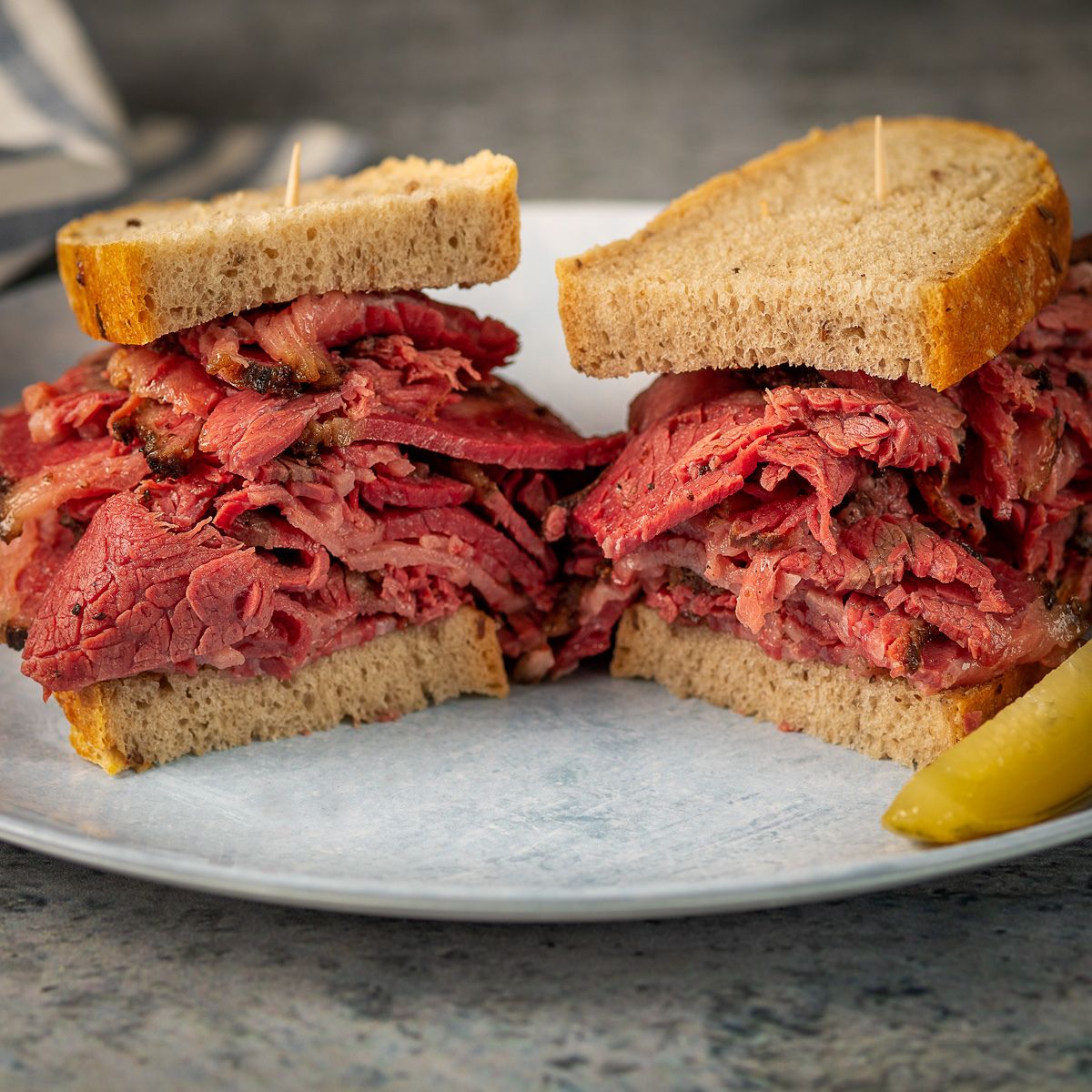
Take a look at my posts on How to Trim a Beef Brisket, Homemade Kosher Dill Pickles, and Do Pickles Go Bad? How Long Do Homemade Pickles Last?
Jump to:
Pick the Right the Brisket
Great pastrami begins with a great brisket. A whole packer brisket has two very distinct sections, the flat and the point. The flat is the larger of the two and tends to be lean. Pastrami is made from the flat so there is no reason to buy a packer brisket. Your local butcher shop will gladly sell you just the flat that has been separated from the point. For this recipe, I used a prime Wagyu brisket and the result was excellent.
Pastrami has some fat on it and a brisket flat will have a layer of fat on one side that you want to keep. After soaking in a brine solution for a week, the brisket will be coated with a layer of crushed peppercorns and coriander seed and then smoked, low and slow, for 6 hours. After a 2-hour rest, the pastrami is ready to slice and enjoy. It will be a beautiful pink color throughout.
Leftover pastrami is best stored unsliced. When ready for another great sandwich, slice the pastrami nice and thin and then steam the slices for about 60 seconds, until warmed through. Pastrami must be enjoyed hot.
Ingredients
- Brisket (flat, not the point)
- Water
- Brown sugar
- Kosher salt
- Curing salt
- Pickling spice
- Bay leaves
- Peppercorns
- Coriander seed
See recipe card for quantities.
Instructions
Trim the Brisket
One side of the brisket will have a layer of fat that should be trimmed down to about ¼" thick. Remove any hard pieces of fat (they will not render) and grayish areas of fat that resemble skin. At the bottom of this article is a link to my YouTube video on how to trim a brisket. That video involves trimming a full packer brisket but it will be helpful to watch for the parts about trimming the flat.
Brine it for a Week
Brining is perhaps the most important step in the whole process. The brining process will create pastrami that is both tender and juicy. Simply place the brisket in a non-reactive tub with a tight fitting lid add the brining solution, and place it in the refrigerator. I used a dough tub, but any large plastic storage container with a tight fitting lid would work.

Place the brisket in a plastic container with a tight fitting lid.
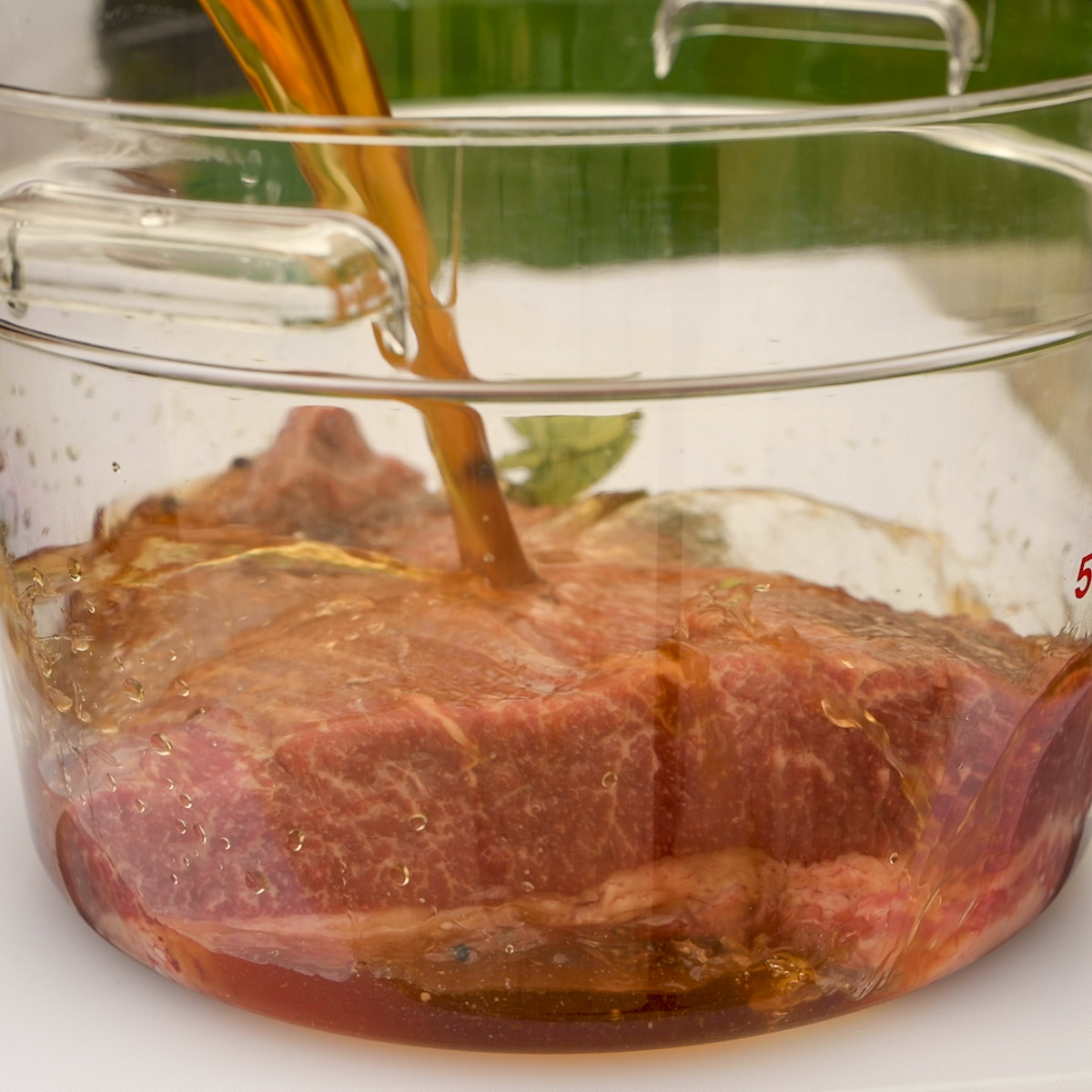
Mix the brine ingredients and stir until the sugar and salt is dissolved. Pour the mixture over brisket, cover and refrigerate for 6 - 7 days.
Smoke the Brisket Low and Slow
Making pastrami requires a two-step cooking process. First, smoke the brisket at 225˚F until the internal temperature reaches 165˚F. This low and slow method allows the pastrami to absorb the smoky flavors gradually, resulting in a mouthwatering final product.
While smoking, keep a close eye on the internal temperature of the brisket. Aim for an internal temperature of 165°F, as this ensures that the meat is cooked thoroughly. Once it reaches this point, it's time to take the next step.
Wrap the brisket tightly in two or three layers of heavy aluminum foil, ensuring it is sealed securely. Return it to the smoker and continue cooking until the internal temperature reaches 185°F. This additional step ensures that the pastrami achieves the perfect texture and tenderness that we all crave.
I am often asked if the brisket can be smoked directly on the grate inside the smoker. The answer is yes, it can. Just make sure your smoker is setup for indirect heat. Also remember that the cooking time can be rather long, just like a regular brisket. Cooking time is a function of both the thickness of the meat and the weight. Therefore, it is essential to gauge the doneness of the brisket based on its internal temperature, rather than relying solely on a set cooking time.
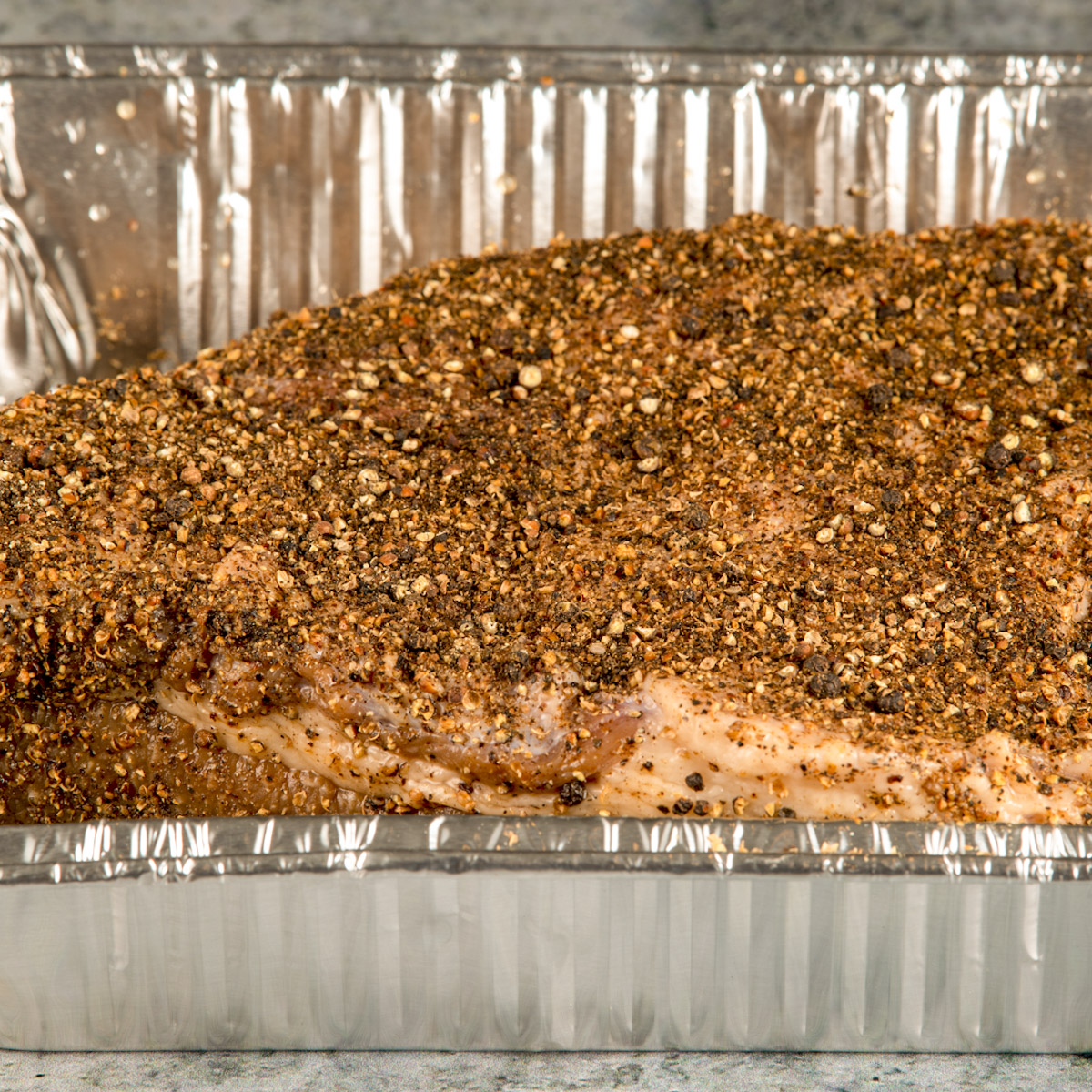
After brining, remove the brisket, rinse and pat it dry. Discard the brine. Coarsely grind the peppercorns and coriander in a clean coffee grinder. Coat the brisket all over with the peppercorn and coriander mixture. Place it in the smoker.
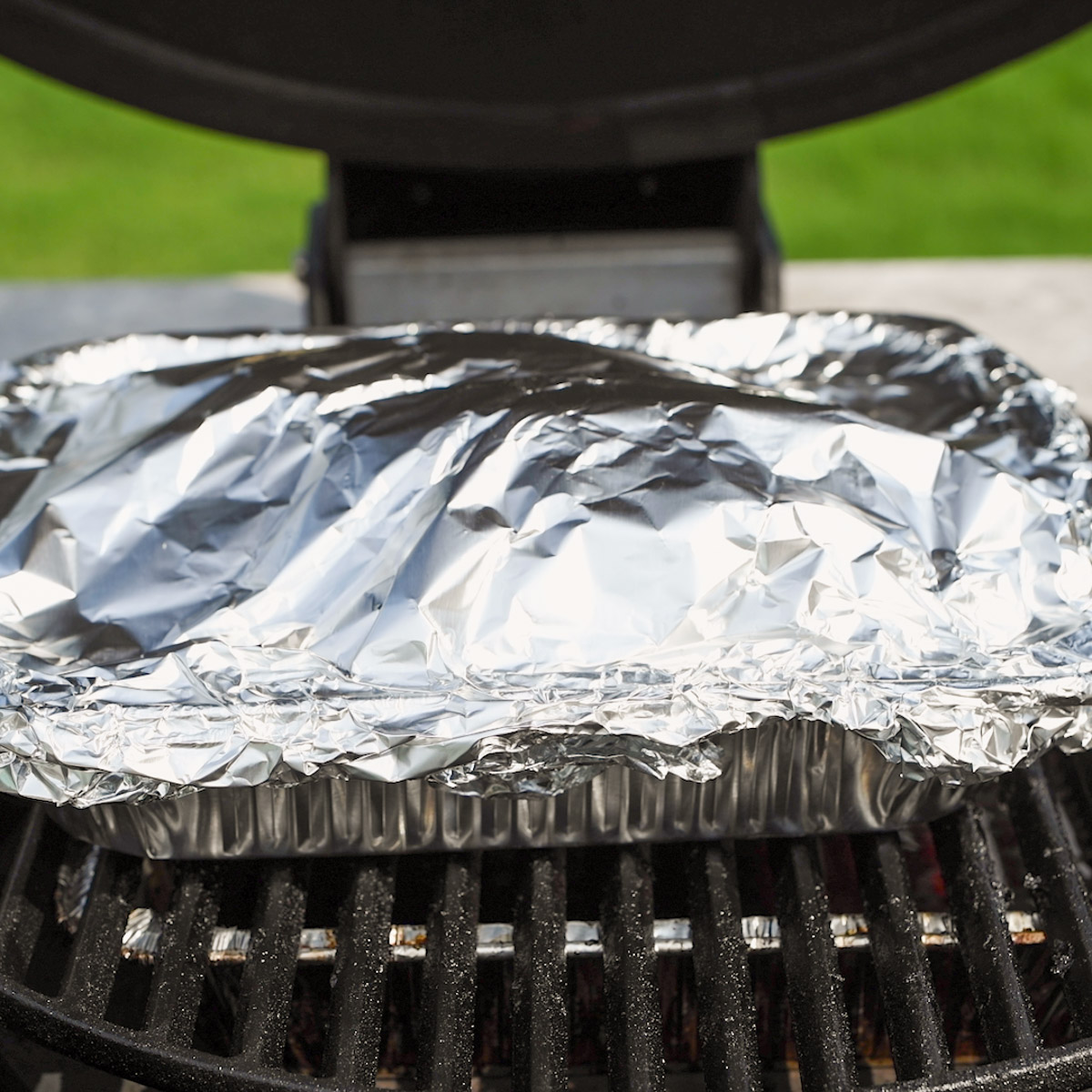
After the brisket is done smoking, cover it with foil and return it to the smoker.
Let it Rest Then Rest Some More
Remove the brisket from the smoker and wrap it in a bath towel (foil and all). Place it in an ice chest to rest for two hours. This step is extremely important to help the pastrami reabsorb all that juice. If you carve it too soon, the juice will all run out and you will be left with dry pastrami.
After a two-hour wait, it's time to savor the rewards of patience. Remove the rested pastrami and slice it into thin, succulent slices, cut across the grain. Buy some fresh seeded rye bread, and stack the pastrami high, really high. Don't forget the mustard, it adds the perfect zing to complement the rich flavors. With every bite, you will experience delightful indulgence in a sandwich that is nothing short of extraordinary.

After resting two hours the pastrami is ready to cut.

Cut the pastrami into thin slices and pile it high onto fresh rye bread.
For a real treat, add a slice or two of Swiss cheese.

Equipment
A smoker is essential to making homemade pastrami. The key is being able to control the temperature and cook low and slow. This recipe was made in a Kamado Joe, but I have also made it in a Big Green Egg and a Yoder stick burner.
Storage
Store cooked pastrami in an airtight container in the refrigerator for up to 3 days. It reheats well in a microwave, just don't overdo it. It's better to do multiple 30 second bursts and check it than dry it out with one long burst.
Top Tip
Watch your cooking temperature carefully. A temperature control device, like a Fireboard, is essential to successful long, slow cooking times. Look at the video below on using a Fireboard.
Final Thoughts
By following these guidelines, you can confidently smoke your pastrami to perfection, achieving a delightful balance of flavors and succulent texture. So fire up that smoker and make some delicious, homemade pastrami Enjoy!
Related
Looking for other recipes like this? Try these:
Pairing
These are my favorite dishes to serve with this recipe.
📖 Recipe
Homemade Pastrami Recipe
Ingredients
Method
- Place the brisket in a tub with a tight fitting lid. Mix all brine ingredients and stir until sugar and salt is dissolved. Pour the brine over brisket, cover and refrigerate for 7 days.
- Remove the brisket, rinse it off with cold water and pat it dry.
- Coarsely grind peppercorns and coriander in a coffee grinder. Coat the brisket all over with the peppercorn and coriander mixture.
- Setup your smoker for indirect heat. Smoke the brisket at 225°F until the internal temperature reaches 165 degrees. Don't use any wood, just charcoal.
- Then wrap the brisket tightly in two or three layers of heavy aluminum foil and return to the smoker. Continue to cook until the internal temperature reaches 185 degrees. The total cooking time will be around 6 hours.
- Remove the brisket from the smoker and wrap it in a bath towel (foil and all). Place it in an ice chest to rest for two hours. Slice it thin against the grain and stack it high. Don't forget the mustard and pickle.

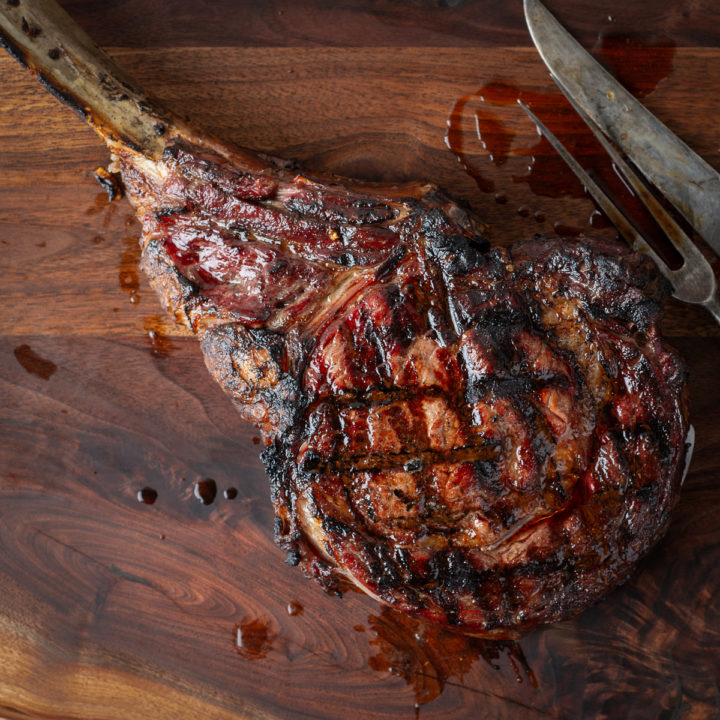
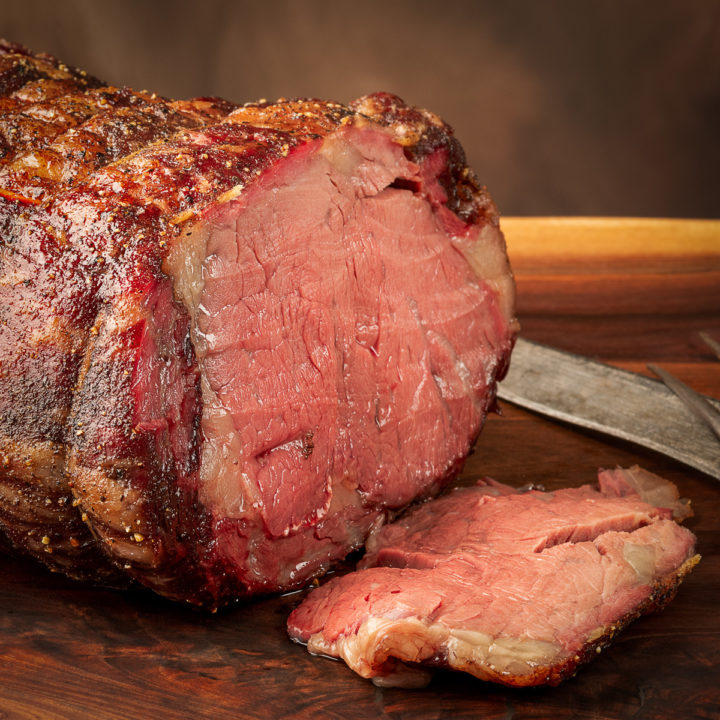

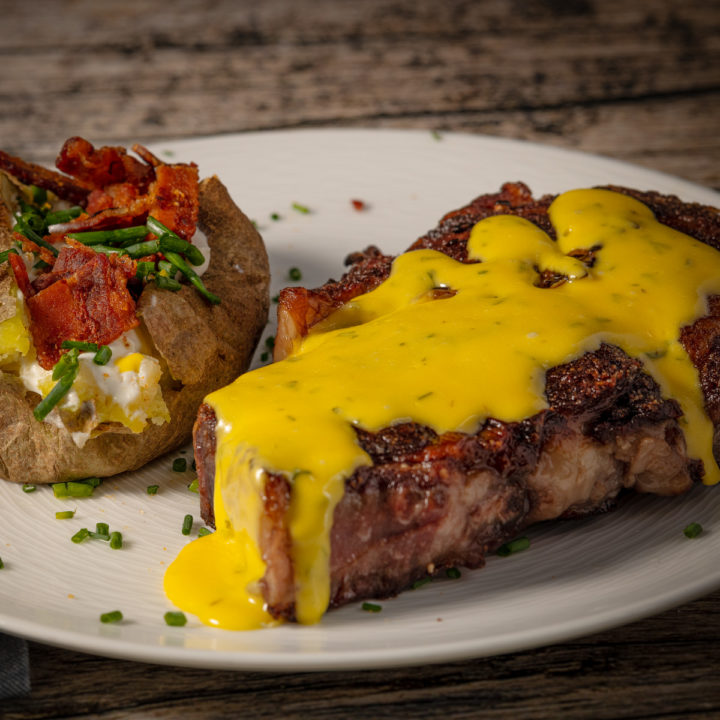
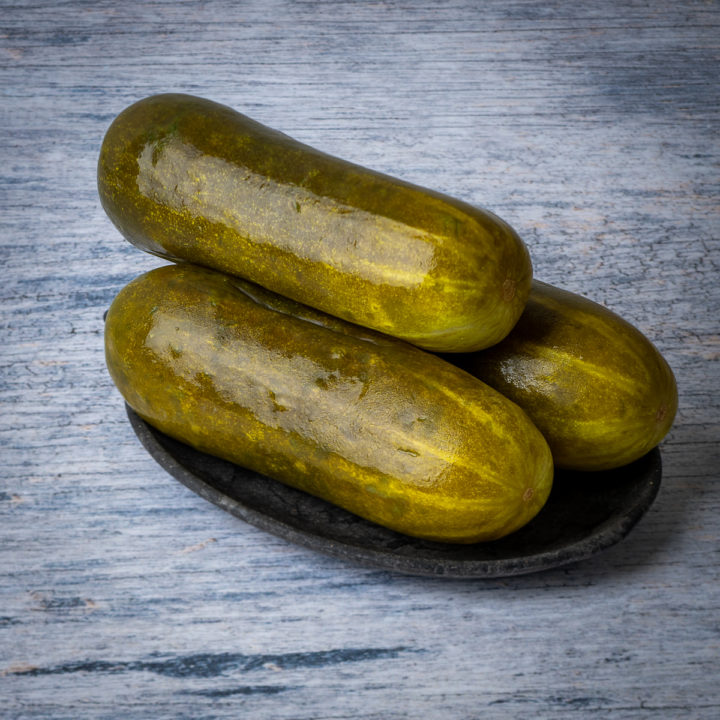
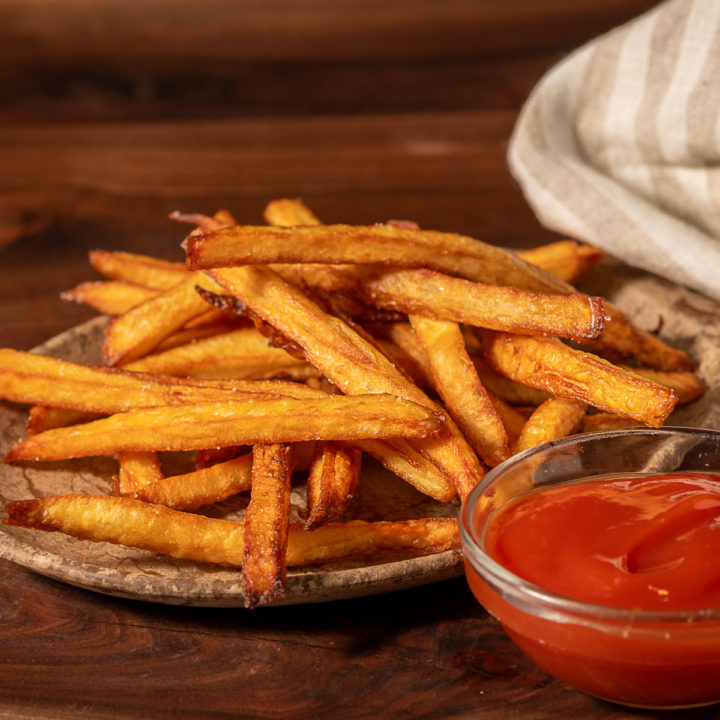
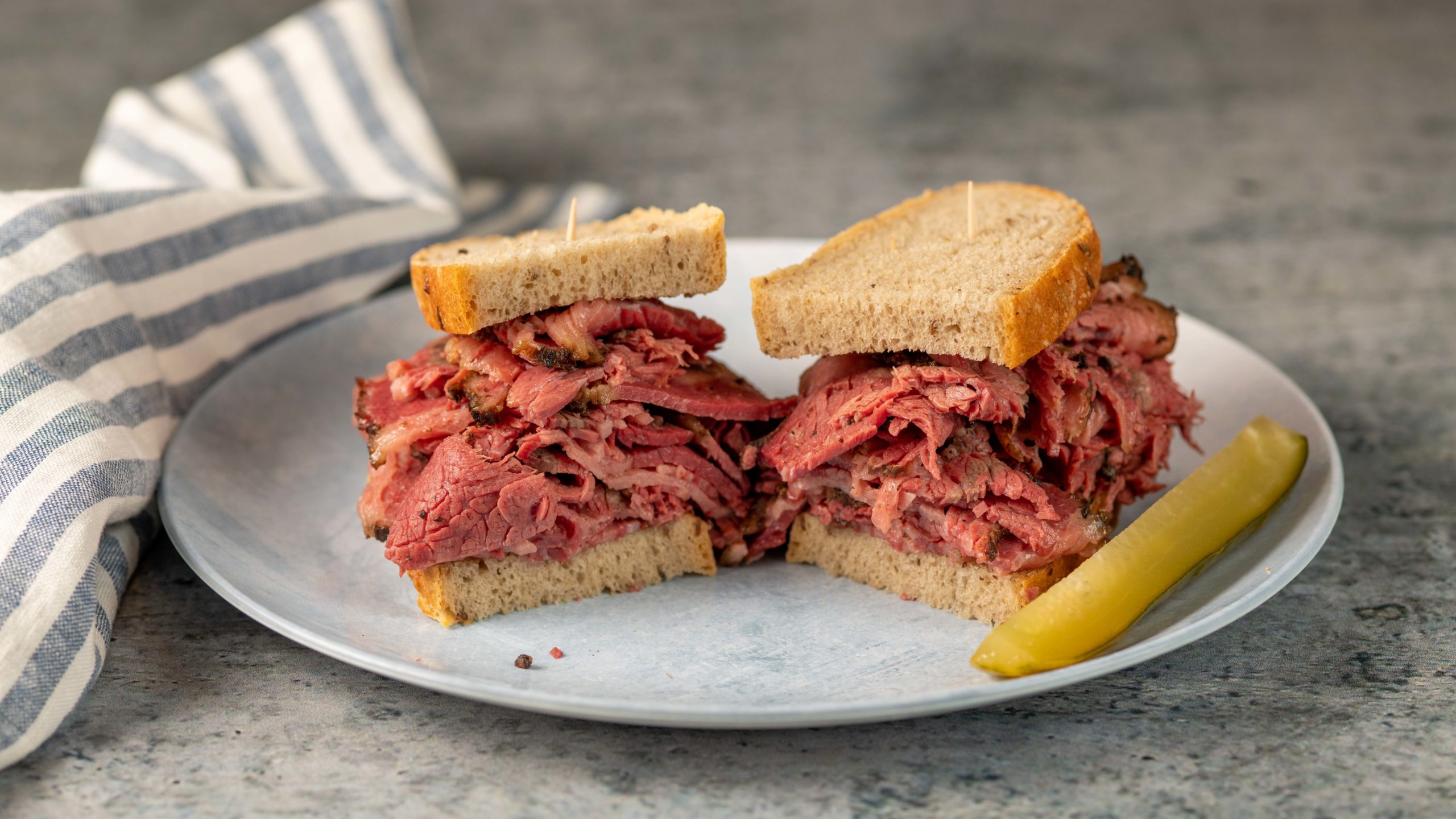
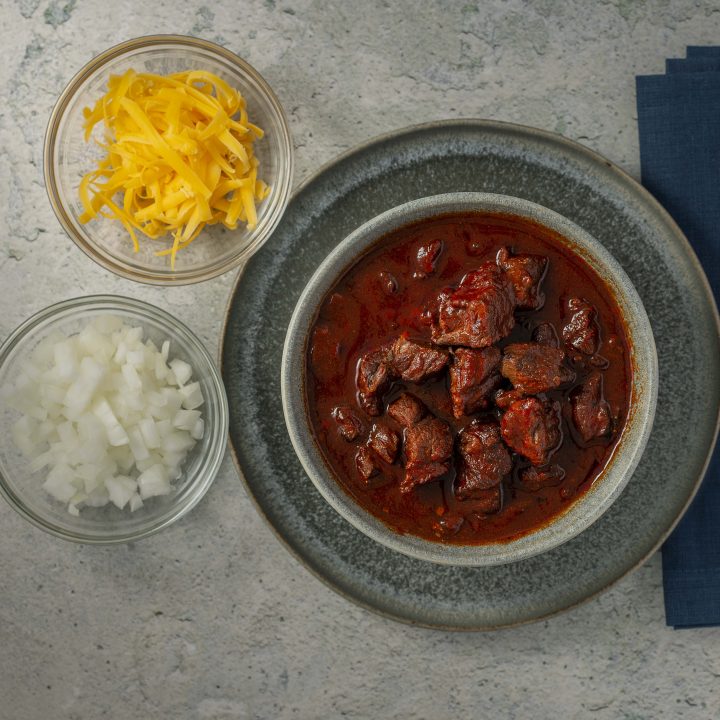
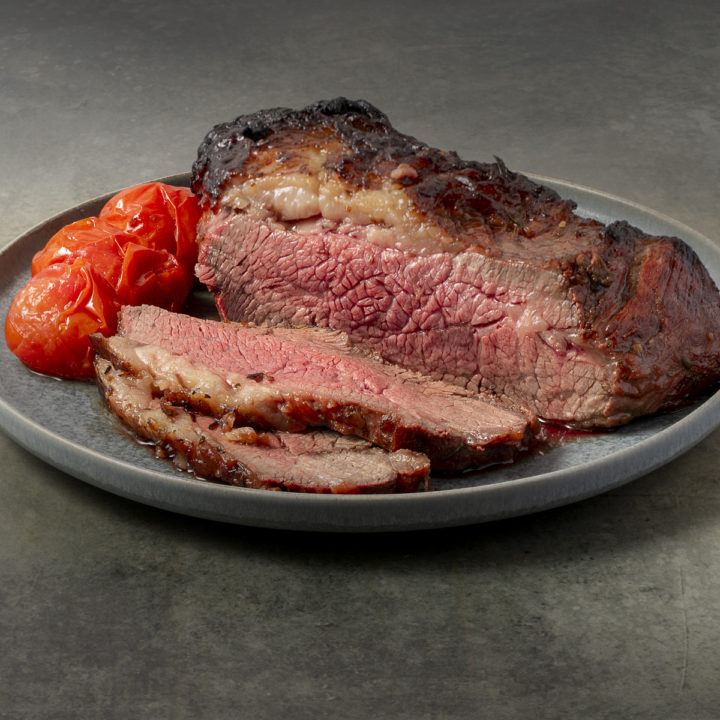
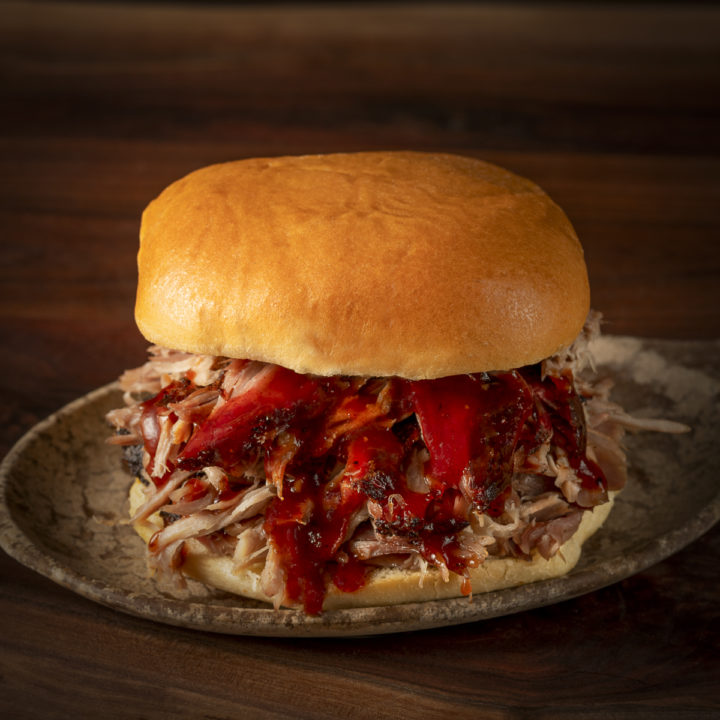
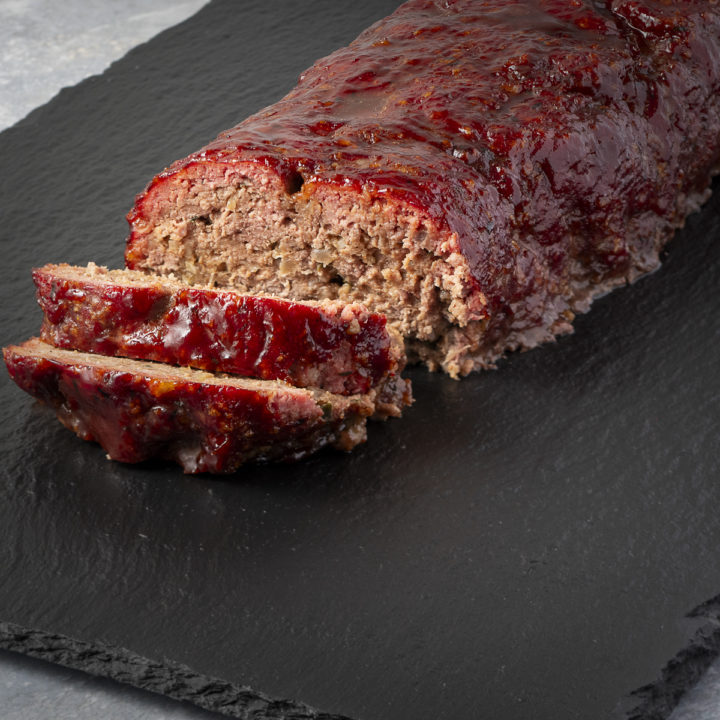
Leave a Reply